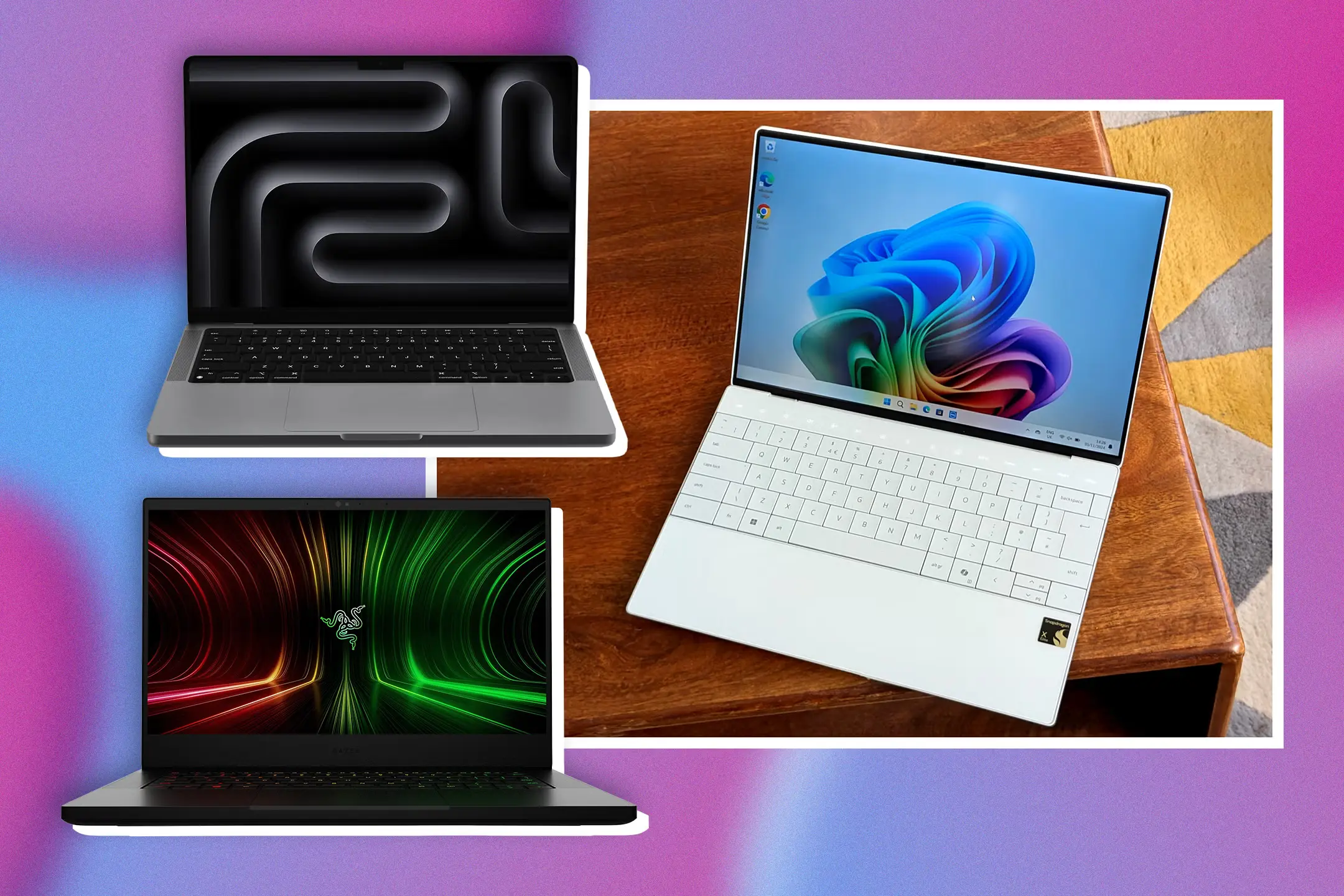Introduction: Why the U.S. Leads in Tech Trends
When people talk about the world’s most influential technology landscape, the U.S. is always front and center. From Silicon Valley startups to Wall Street-backed AI giants, American companies set the tone for global adoption. What’s happening in the U.S. often becomes a global standard, whether it’s in smartphones, cloud computing, or now, artificial intelligence.
The past few years have shown an accelerated pace of change: tools once considered futuristic—like generative AI, augmented reality headsets, and autonomous driving are now part of mainstream discussions. Investors, businesses, and everyday users are watching closely because U.S. tech trends usually determine where money, innovation, and jobs will flow next.
Below, we break down five latest tech trends in the U.S. that are reshaping industries and everyday lives.

1. Generative AI Is Becoming a Daily Tool
Artificial intelligence is no longer just powering research labs it’s on every laptop, smartphone, and office platform. The U.S. is leading this revolution with companies like OpenAI (ChatGPT), Google (Gemini), and Anthropic (Claude)rolling out tools millions of Americans use daily.
- Workplace Integration: AI is rewriting emails, generating presentations, analyzing large datasets, and even drafting code for engineers.
- Creative Industries: Artists, musicians, and writers are leveraging AI to brainstorm, co-create, and speed up production.
- Healthcare: Hospitals are piloting AI assistants that help summarize patient records, predict disease risks, and personalize treatments.
Real-Life Example: Microsoft integrated AI across its Office suite in 2024 under “Copilot,” allowing professionals to generate slides, crunch numbers, or draft reports with a single prompt. For millions of U.S. workers, this is no longer experimental it’s a daily necessity.
2. Spatial Computing and Mixed Reality Headsets
Another U.S.-led tech trend is the leap into spatial computing the blending of virtual and real worlds through wearable devices. Apple’s Vision Pro is the most hyped product in this space, launched in 2024 with micro-OLED displays, eye-tracking, and mixed-reality controls.
Unlike VR headsets that isolate users, spatial computing aims to integrate apps, media, and games into your real environment. Imagine floating multiple screens around your living room, joining a work meeting in 3D, or watching sports on a 100-foot virtual display while sitting on your couch.
Why It Matters in the U.S.:
- Work: Enterprises are exploring Vision Pro for training, design collaboration, and simulations.
- Entertainment: Disney+ launched its first fully immersive movie experiences on Apple’s headset.
- Social Interaction: Mixed reality could replace flat Zoom calls with shared 3D virtual spaces.
3. The EV and Autonomous Vehicle Revolution
The push toward electric and self-driving cars is one of the most impactful tech trends in the U.S. Automakers like Tesla, Ford, GM, and Rivian are competing fiercely, while tech giants such as Waymo (Alphabet) and Cruise (GM) are racing to deploy autonomous ride-hailing fleets.
- EV Growth: In 2023, EV sales in the U.S. crossed 1.4 million units, up 50% year-over-year.
- Charging Infrastructure: Federal funding under the Bipartisan Infrastructure Law is expanding fast-charging networks nationwide.
- Autonomous Testing: Cities like San Francisco and Phoenix already have self-driving taxis operating in limited areas.
Real-Life Example: Waymo’s robotaxi service in Phoenix is fully driverless, giving passengers a glimpse into a future where ridesharing may eliminate human drivers.
4. The Rise of HealthTech and Wearables
Healthcare innovation is rapidly expanding in the U.S., and digital tools are at the forefront of this growth. HealthTech isn’t just about hospital equipment anymore, it’s about wearables, apps, and AI-driven diagnostics that put power in consumers’ hands.
- Wearables: Apple Watch and Fitbit are now medical-grade devices capable of ECG readings, blood oxygen monitoring, and irregular heartbeat detection.
- Telemedicine: Platforms like Teladoc have seen rapid adoption as Americans prefer video consultations over in-person visits for routine care.
- AI in Health: Diagnostic AI is now FDA-approved in certain fields, such as retinal imaging and cancer detection.
Real-Life Example: In 2024, the FDA cleared a new AI-powered wearable patch that continuously monitors blood pressure—something millions of Americans may soon wear daily to prevent cardiovascular disease.
5. Cybersecurity and Data Privacy at the Forefront
With great innovation comes great responsibility and risk. Cybersecurity is one of the fastest-evolving tech trends in the U.S. as threats become more sophisticated. From ransomware attacks on hospitals to phishing targeting remote workers, the demand for stronger security tools has skyrocketed.
- Zero-Trust Security: U.S. corporations are adopting a “trust nothing, verify everything” model for data access.
- AI-Powered Threat Detection: Companies like Palo Alto Networks and CrowdStrike are deploying AI to predict and neutralize cyber threats.
- Consumer Awareness: Americans are increasingly concerned about data privacy, leading to new legislation like California’s CPRA (California Privacy Rights Act).
Real-Life Example: After several major hospital ransomware attacks in 2024, federal agencies partnered with private cybersecurity firms to build faster response networks, highlighting how critical this field is becoming, read here!
FAQs: Answering America’s Top Questions About Tech Trends
1. What are the latest tech trends in the U.S. right now?
Generative AI, spatial computing, electric vehicles, healthtech, and cybersecurity are leading the way.
2. How is AI changing daily life in America?
It’s integrated into workplaces, creative tools, healthcare diagnostics, and even consumer apps.
3. What makes spatial computing different from VR?
Spatial computing blends digital apps into the real environment instead of fully immersing users in virtual worlds.
4. Are electric cars really taking over in the U.S.?
Yes—EV sales are growing at double-digit rates, and federal policies are accelerating adoption.
5. How important are wearables in healthcare?
They’re game-changing, giving individuals real-time health monitoring and allowing doctors to make quicker diagnoses.
6. Is cybersecurity a growing career path?
Absolutely—cybersecurity jobs are among the fastest-growing in the U.S. tech sector.
7. Will mixed reality replace laptops and phones?
Not immediately, but companies like Apple believe headsets may become the next computing platform.
8. How are U.S. cities preparing for autonomous cars?
By updating road regulations, expanding charging networks, and working with tech companies for pilot programs.
9. What role does government policy play in tech trends?
Huge—federal investments in EVs, AI research, and cybersecurity shape how quickly adoption happens.
10. Which U.S. tech trends are most likely to go global?
AI, EV adoption, wearables, and cybersecurity practices are already spreading worldwide.
Key Takeaways
- AI is no longer futuristic—it’s everyday.
- Spatial computing is redefining screens and interaction.
- The EV revolution is transforming mobility faster than expected.
- HealthTech is putting medical power in the consumer’s pocket.
- Cybersecurity is the backbone of trust in a digital-first world.
The latest tech trends in the U.S. are not just shaping gadgets—they’re shaping society. They influence how Americans work, move, heal, and protect themselves. More importantly, they serve as a preview of where the global digital economy is heading. For professionals, investors, and consumers, keeping an eye on these five trends is like looking into the future—because what happens in the U.S. rarely stays in the U.S.
#TechTrends #USTechInnovation #FutureOfTech #AIeverywhere #SpatialComputing #EVRevolution #HealthTech #CybersecurityFirst #DigitalFuture #NextGenTech

